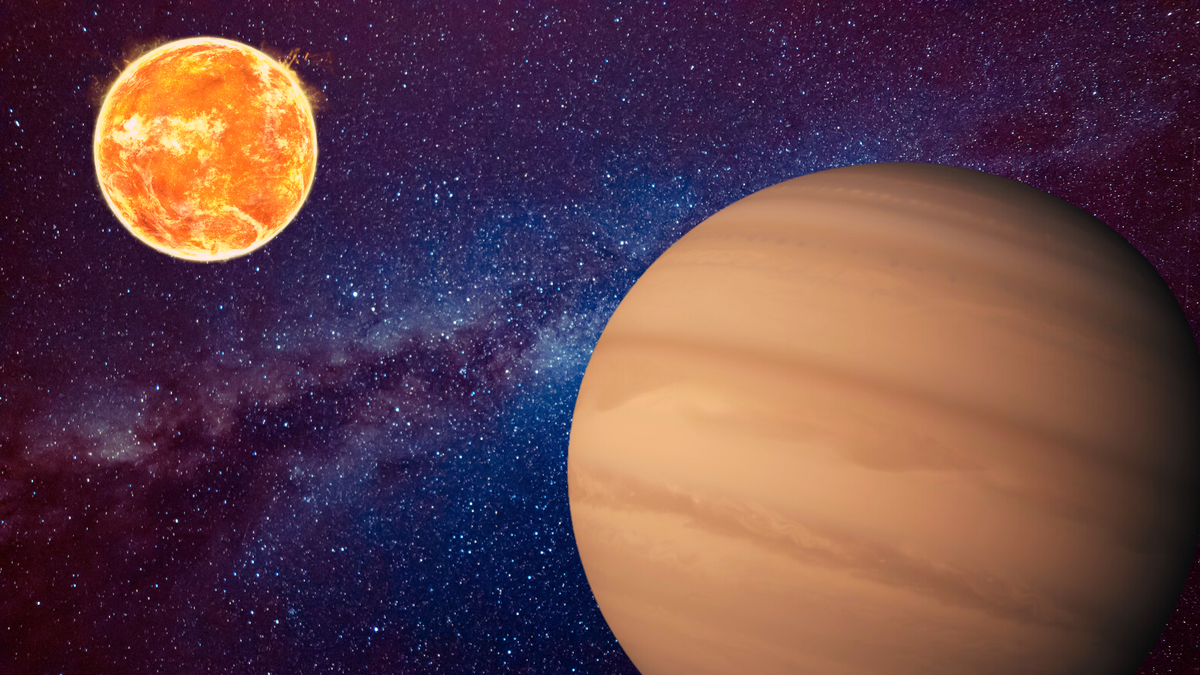Science
Related: About this forumA Jupiter-size exoplanet formed around a tiny star. Astronomers aren't sure how
By Robert Lea published about 3 hours ago
Planets this big aren't supposed to be found around red dwarfs like TOI-4860.

An illustration shows a suprisingly large gas giant planet orbiting a relatively tiny star. (Image credit: Robert Lea)
A massive, Jupiter-size planet has been found orbiting a relatively small, low-mass star, surprising astronomers and challenging theories on how planets form.
The extrasolar planet, or exoplanet, orbits the red dwarf TOI-4860. Located in the constellation of Corvus, TOI-4860 has a mass equivalent to just around a third of the sun's. The exoplanet in question, aptly designated TOI-4860 b , falls close enough to the star to complete an orbit approximately once every 1.5 Earth days, classifying it as a "warm Jupiter."
This is unusual for two reasons.
First, with widths equivalent to about three-quarters of Jupiter's, planets like this one aren't supposed to form around low-mass stars. Second, TOI-4860 b seems to be enriched with a high proportion of metals — a term astronomers use to describe elements heavier than hydrogen and helium.
"Under the canonical planet formation model, the less mass a star has, the less massive is the disk of material around that star," team member and University of Birmingham Ph.D. candidate, George Dransfield, said in a statement. "Since planets are created from that disk, high-mass planets like Jupiter were widely expected not to form. However, we were curious about this and wanted to check planetary candidates to see if it was possible. TOI-4860 is our first confirmation and also the lowest mass star hosting such a high mass planet."
More:
https://www.space.com/jupiter-size-exoplanet-tiny-star
Wounded Bear
(60,661 posts)Irish_Dem
(57,093 posts)keithbvadu2
(40,059 posts)